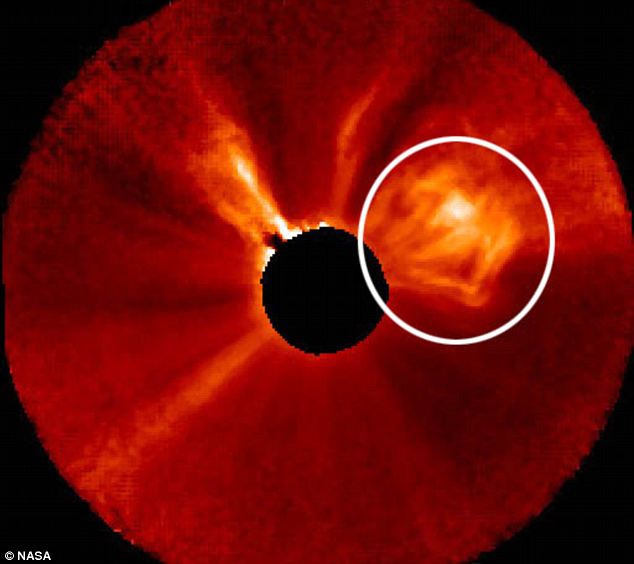
© NASAIt's coming this way: The CME, seen by Nasa's STEREO-B spacecraft, can be seen blasting out from the Sun on the right-hand side (circled)
Skywatchers will be hoping for clear skies from today because particles from a recent solar storm will slam into Earth and produce amazing Northern Lights, or auroras.
On the downside, experts expect radio blackouts for a few days, caused by the radiation from the flare - or coronal mass ejection (CME) - causing magnetic storms.
The flare is part of a larger increase in activity in the Sun, which runs in 11-year cycles. It is expected to peak around 2013.
The National Oceanic and Atmospheric Administration's Space Weather Prediction Center wrote: 'Category G1 (Minor) geomagnetic storms are expected 28 and 29 December due to multiple coronal mass ejection arrivals. R1 (Minor) radio blackouts are expected until 31 December.'
Devices that depend on radio waves include GPS systems, radios and mobile phones.
A coronal mass ejection contains billions of tons of gases bursting with X-rays and ultraviolet radiation that are flung into space at around 5million mph.
They are mind-bogglingly hot - around 100,000,000C.
The Earth is occasionally hosed by these ejections, leading to amazing shimmering light shows.
